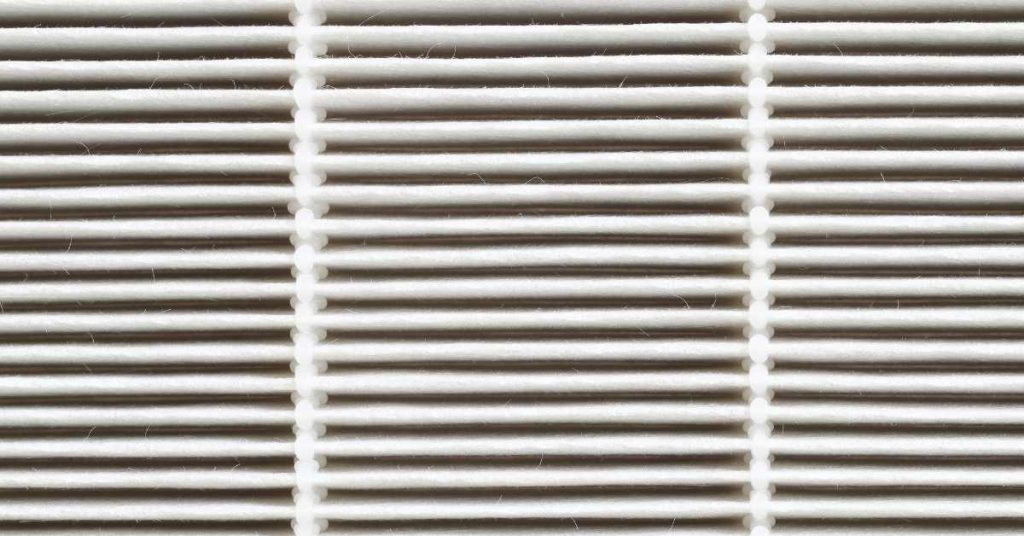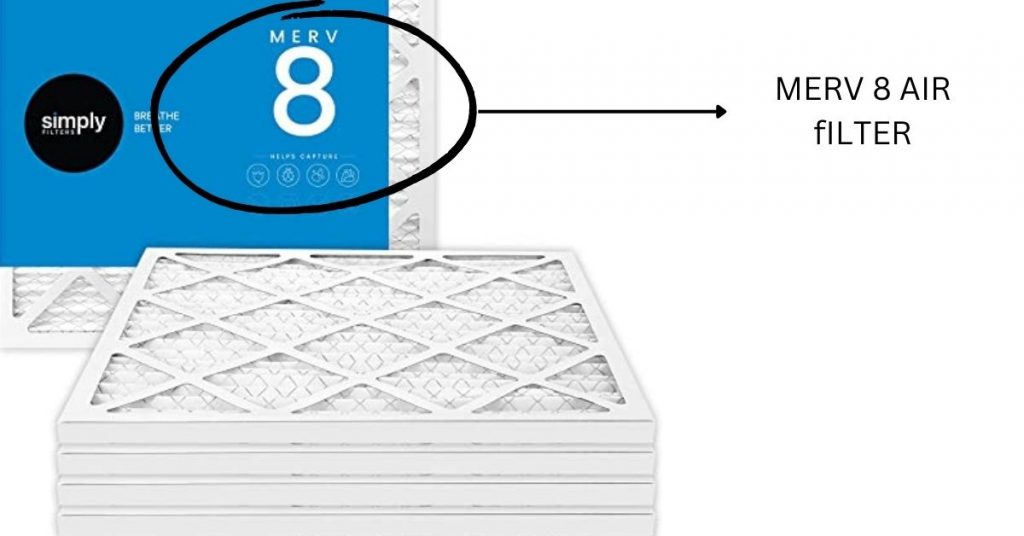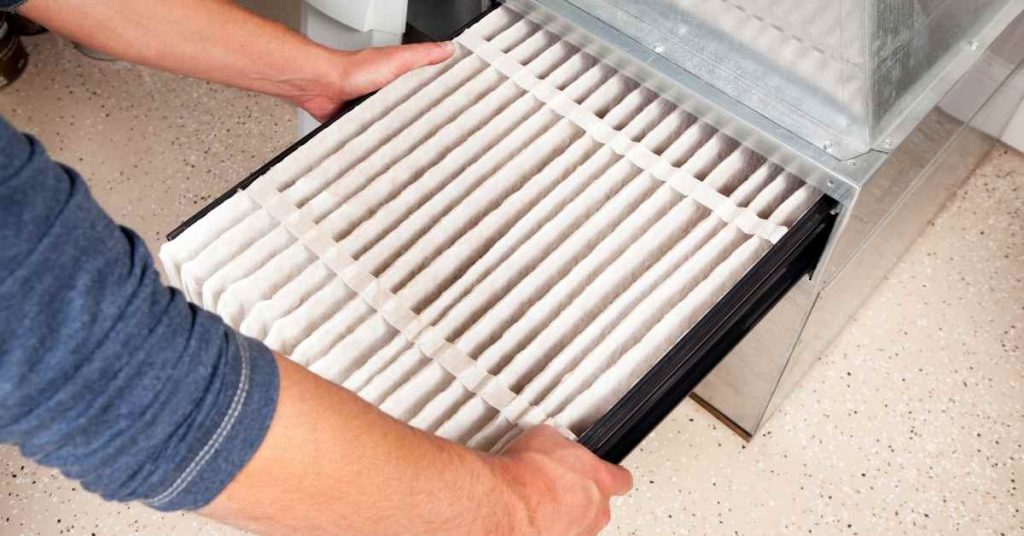
HEPA (High-Efficiency Particulate Air) and MERV (Minimum Efficiency Reporting Value) filters are both designed to improve indoor air quality by capturing airborne particles. However, they differ in various aspects, including their efficiency, filtration capabilities, and specific use cases:
HEPA Filters
- HEPA filters are the gold standard in air filtration, capable of capturing at least 99.97% of particles down to 0.3 microns in size.
- They excel at trapping tiny particles like dust mites, pet dander, pollen, and even some bacteria and viruses.
- HEPA filters are commonly used in medical facilities, cleanrooms, and environments where ultra-clean air is critical.
- They are not commonly used in residential HVAC systems due to their high efficiency, which can restrict airflow and strain the system.
- When used in HVAC systems, HEPA filters may require system modifications to accommodate the increased airflow resistance.
MERV Filters
- MERV filters are designed for use in residential and commercial HVAC systems, and they have a wide range of efficiency levels, typically from MERV 1 to MERV 16.
- MERV ratings indicate a filter’s ability to capture particles ranging from 0.3 to 10 microns in size.
- Lower MERV-rated filters (1-4) are less efficient but allow for higher airflow, while higher-rated filters (13-16) are more efficient at capturing smaller particles but can restrict airflow if not properly sized for the system.
- MERV filters are effective at removing common indoor pollutants like dust, pollen, mold spores, and larger particles.
- They are an excellent choice for most residential and commercial HVAC systems and require no significant system modifications.
HEPA vs MERV Filters
| Specification | MERV Filters | HEPA Filters |
|---|---|---|
| Particle Size Capture | Captures particles down to a specified size, with varying efficiency based on MERV rating | Captures 99.97% of particles as small as 0.3 microns |
| Filtration Efficiency | Efficiency ratings range from MERV 1 to MERV 20 | Minimum efficiency of capturing 99.97% of particles |
| Air Flow Restriction | Varies depending on the MERV rating, with higher-rated filters potentially causing greater airflow resistance | Can cause significant airflow restriction due to dense filtration media |
| Application | Commonly used in residential and commercial HVAC systems | Widely used in cleanrooms, hospitals, laboratories, and environments requiring high air quality |
| Certification | MERV ratings assigned based on laboratory testing | HEPA filters must meet specific standards and pass rigorous testing for certification |
| Maintenance | Require regular replacement to maintain effectiveness | Periodic replacement necessary to ensure optimal performance |
| Cost | Generally more affordable compared to HEPA filters | Typically more expensive due to higher filtration efficiency |
| Common Uses | Residential HVAC systems, commercial buildings, general air filtration | Cleanrooms, hospitals, laboratories, air purifiers, critical environments |
| Efficiency Standard | Rated according to ASHRAE (American Society of Heating, Refrigerating, and Air-Conditioning Engineers) standards | Must meet the standards set by the U.S. Department of Energy (DOE) |
| Capture Allergens | Effective in capturing common allergens like pollen, dust, and pet dander | Highly efficient in capturing allergens and microscopic particles |
| Filtration Performance | Provides effective filtration for most residential and commercial applications | Offers superior filtration for environments requiring the highest air quality |
Let us now look at both of these filters in more detail.
HEPA filters

HEPA is an acronym standing for Highest Efficiency Particulate Air. For an air filter to be categorized as HEPA, it must remove at least 99.7% of 0.3 micron-sized particles from the air.
It is therefore true to say that MERV 17-20 air filters can also be categorized as HEPA filters if they can prove that they can remove (at their worst performance) 99.7% of particles with a size of 0.3 microns.
Particles with a size of 0.3 microns are the standard for certifying HEPA filters. But why is that the case?
It turns out (from research of course) that 0.3 microns are the most penetrating particle size (MPPS). Even more than smaller-sized particles. Who would have thought?
You see, HEPA filters are usually made of sheets of fibers of glass randomly arranged and put together. The fibers have tiny pores with diameters of between 0.5 and 2 micrometers (roughly 0.00002 and 0.00008 inch).
The random arrangement of fiber sheets in HEPA filters changes the way air moves through the filter. It creates twisted pathways through which the air is forced through. That is unlike in low-rated MERV filters which work like a kitchen sieve.
The large particles are trapped by the filter just like in regular filters. However, smaller particles are forced to twist and turn as the air moves through the pathways. That movement causes them to collide with the fibers and air molecules and that is how they end up being trapped.
What are True HEPA Filters?
You have probably heard about true HEPA filters. For there to be true HEPA filters, there must be false HEPA filters, right? Not Exactly!

In the United States, HEPA filters as I mentioned are expected to remove at the very least 99.7% of particles with a size of 0.3 microns from the air being filtered. In Europe however, the requirement is only 87%.
The European (and even some American) HEPA filters are therefore cheaper than the certified American HEPA filters and even have the HEPA label. Needless to say, consumers will naturally prefer to buy those ones.
To counter that effect, American manufacturers of certified HEPA filters started labeling theirs as “true HEPA”. Now when customers see that, they know that is the real deal.
If you are on the market for a HEPA filter and you see one labeled as “HEPA-type” or “HEPA-like” be very careful. True or absolute HEPA filters will have the correct rating (99.7%) printed on them and will also likely have the “true HEPA” label on them.
MERV Filters

MERV stands for Minimum Efficiency Reporting Value. It is a standard developed by the American Society of Heating, Refrigeration, and Air-Conditioning Engineers (ASHRAE).
MERV ratings indicate (on a scale of 1 to 20) how effective a filter is in removing particles from the air. The higher the rating the more effective the filter is and vice versa.
MERV filters are used as pre-filters in industries, in residential furnaces as well as in hospitals, laboratories, and pharmaceutical industries among other commercial uses, depending on their rating.
It is the low-rated (MERV 1-4) filters that are mainly used as pre-filters. As I mentioned earlier these filters will only trap the large particles (about 20% of particles sized 3 to 10 microns) and let the small ones pass through.
MERV filters with a higher rating (16-20) will trap 95% and above of particles with a size between 0.3 and 1 microns. That is why these filters are used in sensitive areas like hospital theater rooms where contamination is highly avoided.
However, filters with a high MERV rating are not necessarily the best filters to use. That is especially the case for residential HVAC systems. In fact, MERV 14 filters and above shouldn’t be used in home furnaces and air handlers.
The best MERV rating for home HVAC systems is between 8 and 13. Filters in that category provide an excellent balance between filtration, air temperature regulation, and furnace efficiency.
Although filters with a higher MERV rating (just like HEPA) filters have excellent filtration capabilities, they also have a very high pressure drop. Pressure drop is the reduction in pressure created by the filter.
As air flows through the filter, it encounters restriction which reduces its pressure. All filters have some sort of pressure drop but the pressure drop increases with an increase in MERV ratings.
Although low-rated MERV filters have low pressure-drop, they are poor at filtration. They therefore cannot be used in home furnaces.
Highly-rated MERV filters restrict the flow of air from the return air duct to the furnace, forcing the blower to work extra harder. That not only increases your electricity bill but also shortens the furnace’s lifespan due to wear and tear.
And that is why the 8-13 MERV filters offer the sweet spot. They remove most of the particles from the air and their pressure drop is not too bad.
For a house that has no pets and nobody suffers from allergies or asthma, a MERV 8 filter will suffice. If your house has pets and/or you suffer from mild allergies or asthma, a MERV 11filter will work well. Only go for a MERV 13 filter if you suffer from severe allergies.
HEPA vs MERV Filters: Applications

HEPA filters are mostly used in vacuum cleaners and air purifiers. You however need to be careful about these appliances if you want to experience the real benefits of a HEPA filter.
All the air pulled in by these appliances must go through the filter before being released back to the house for them to be HEPA-compliant. It is not uncommon to have a vacuum cleaner where the air being released back to the house goes round the filter.
HEPA filters are unlikely to be used in residential HVAC systems. Just like the high-rated MERV filters, they have a very high pressure drop and the furnace blowers will struggle to pull air through them resulting in premature failure of the system.
What actually happens (in most homes) is that the furnace will have a MERV 8-14 filter and then there will be a stand-alone air purifier fitted with a HEPA filter. The HEPA filter in the air purifier will therefore remove the finer particles that will have escaped through the MERV filter.
And basically those are the difference between HEPA and MERV filters. I hope by now you know which filter to use for your HVAC system.
